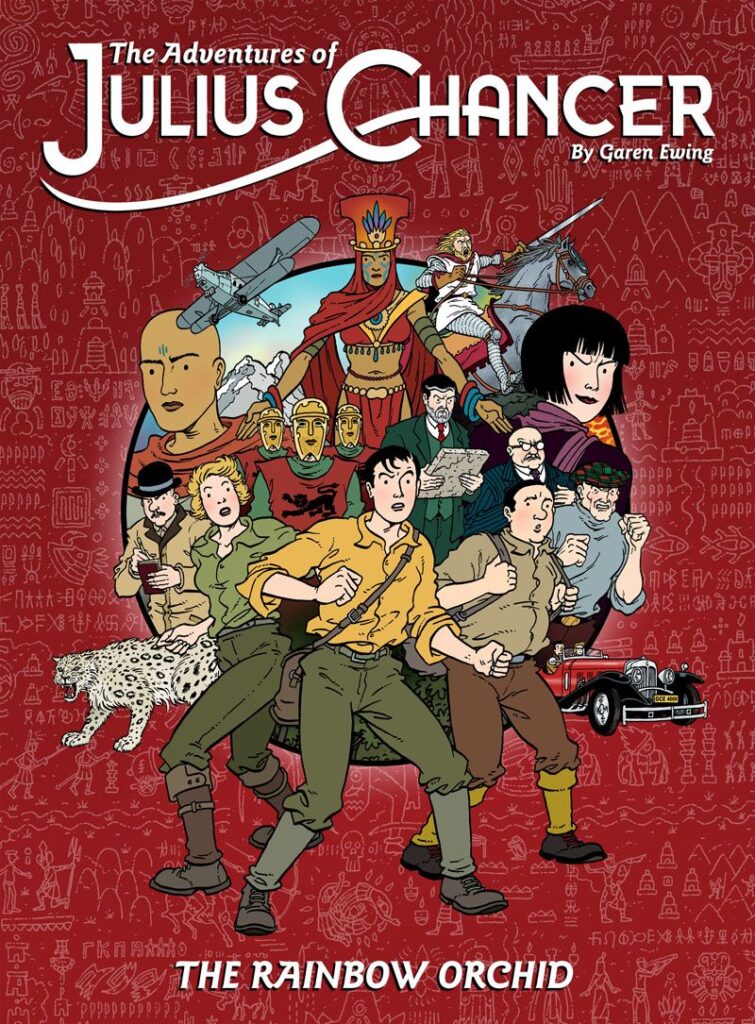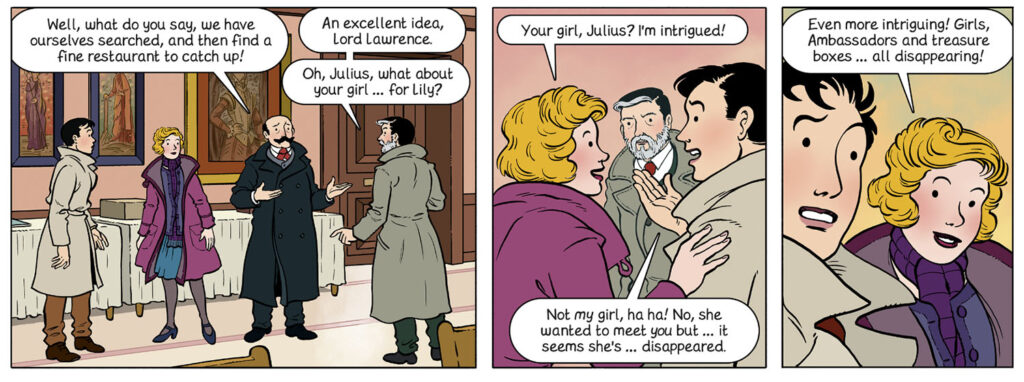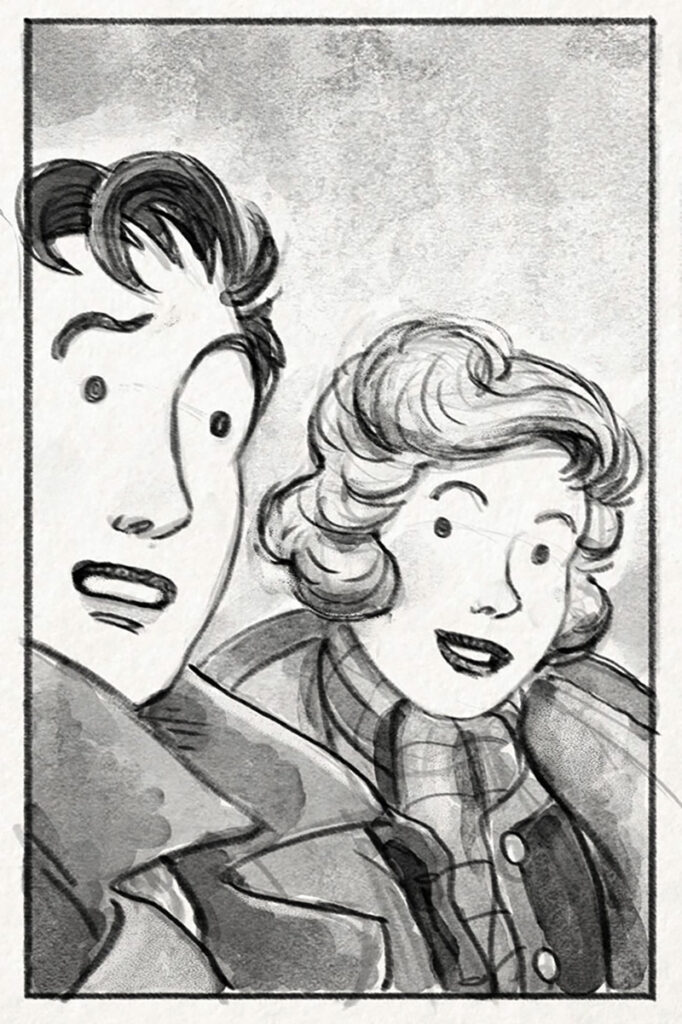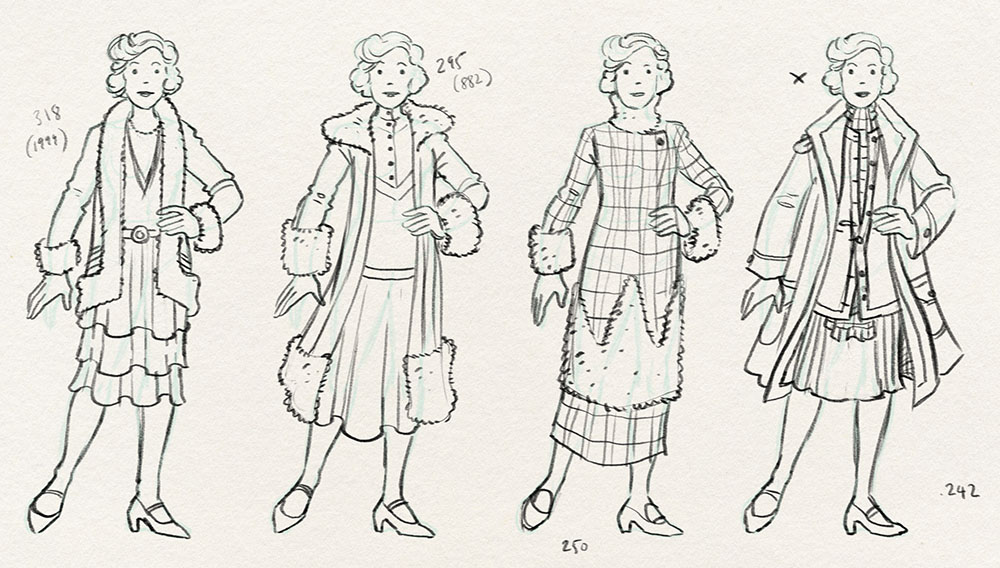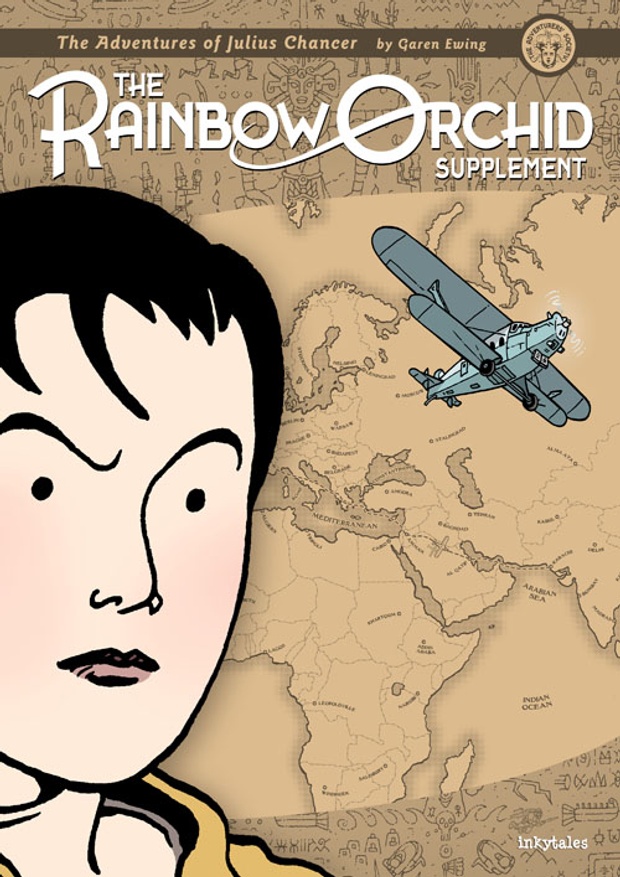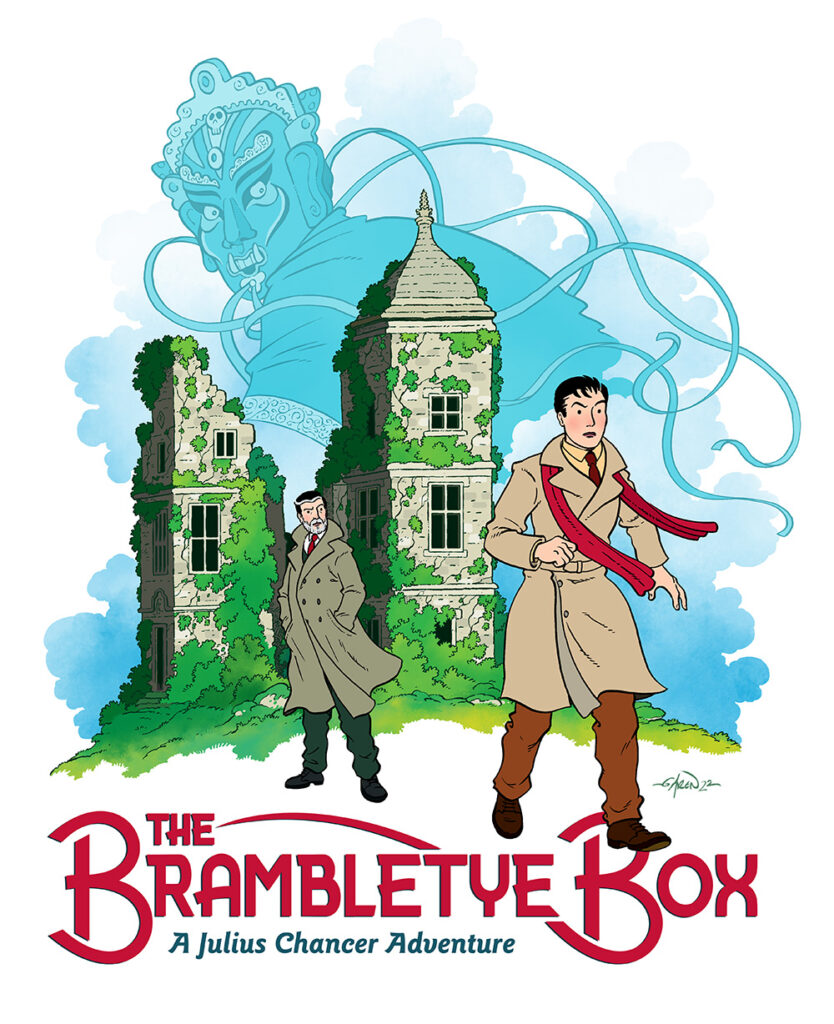
Garen Ewing was born in 1969 and spent most of his childhood lying on the floor drawing and making up stories. After a number of different jobs, including cleaner, stagehand, hotel porter, mushroom farm porter, newspaper ad designer and multimedia designer, he eventually became a full-time illustrator in 2002.
Since then, he has worked on a wide variety of projects for a wide range of clients, including the BBC, The Observer, the NUT, Josef Weinberger, Webb & Webb, Fine Food World, David Fickling Books, Royal Mail … and many, many more.
Garen’s comic adventure The Rainbow Orchid was published by Egmont in 2009, followed by editions in Dutch, French, Spanish, German and Danish. The graphic novel won the Young People’s Comic Award at the 2013 British Comics Awards, as well as being named one of The Observer’s Best Graphic Novels of 2012.
In this interview with Matthew Badham, Garen chats about his career, his hopes for the future and his return to the world of Julius Chancer, for the web strip, Julius Chancer and The Brambletye Box…
Why now for more Chancer – and why online?
This new Julius Chancer story has been bubbling away since completing The Rainbow Orchid, which is pretty much ten years ago now. Life got in the way –children, work, and a bit of inertia, and it moved at a snail’s pace, but never completely vanished. There were one or two points when I thought of leaving Julius alone for good and doing something different, but I kept coming back to it.
About four years ago I seriously considered giving up illustration completely!
Oh no!
But I then got a job doing the artwork for a computer game that was pretty much full-time for three years, with no time for anything else. By the time that finished, in January of 2022, my creativity was well-oiled and my drawing muscles well-exercised, and I was fired up to get back to comics. I got a small project doing an eight-page comic for an IT company. It had a really tight deadline, and once I finished, I just wanted to keep going so I dived straight back into Julius Chancer and The Brambletye Box – and it just felt right. I enjoyed it.
To make sure I was now going to actually commit to it, I decided to go public with the story, which includes putting it online. That gives me the kind of pressure I need to keep going, but also the support is a nice boost.
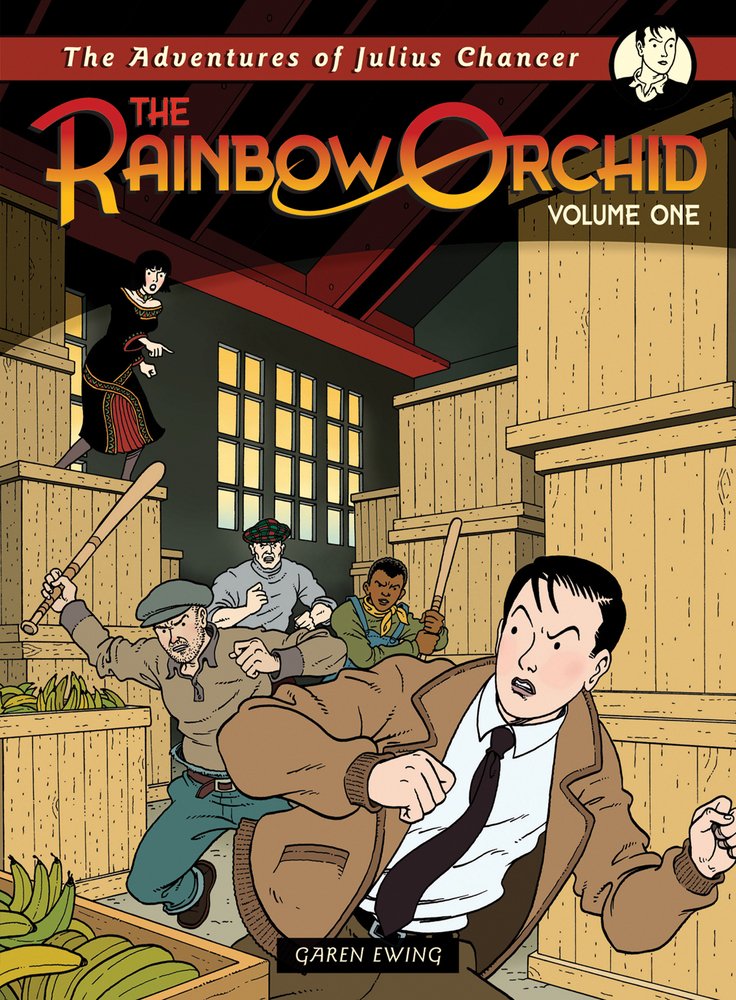

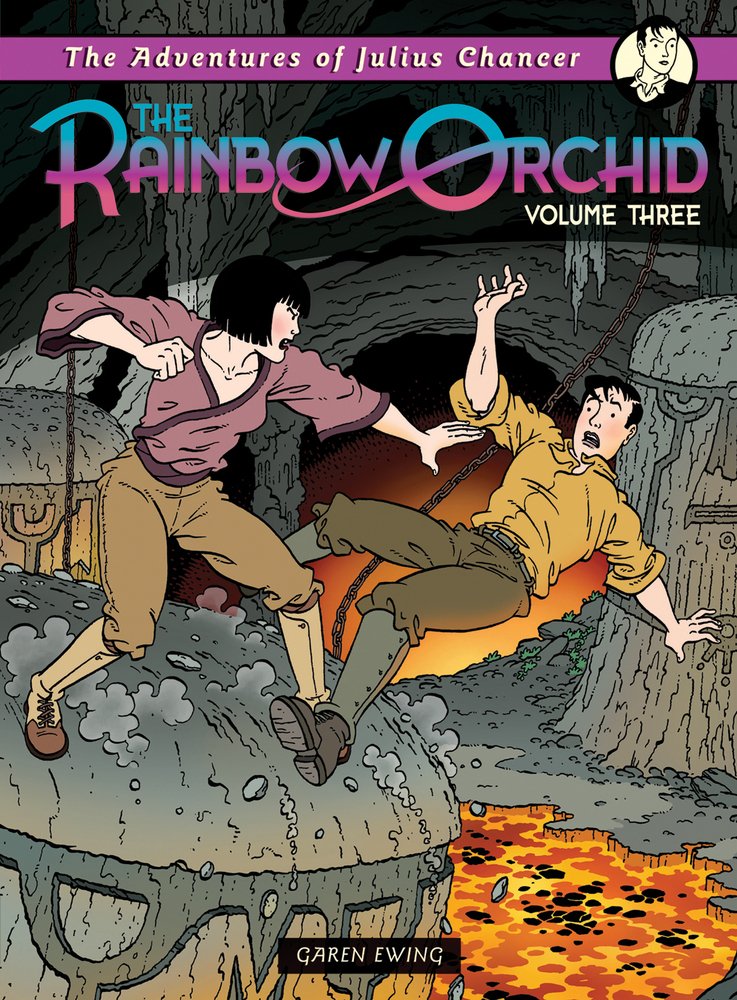
For those who aren’t aware of The Rainbow Orchid, could you give us a quick pitch/synopsis?
The Rainbow Orchid is set in the 1920s and is the story of the search for the fabled rainbow orchid, a flower rumoured to grow somewhere in the far reaches of the Hindu Kush. The main character is Julius Chancer, who works for historical researcher Sir Alfred Catesby-Grey, and they’re joined by silent-film star, Lily Lawrence and her agent, Nat Crumpole. It’s partially inspired by authors such as Rider Haggard and Conan-Doyle, and also those lovely 1930s ‘lost world’ films, like She and Lost Horizon.
Please can you ‘preview’ this new strip?
A mysterious box is stolen during an auction, leading Julius on an adventure featuring a Chinese stage magician with astonishing powers, a ruined 17th-century Sussex mansion, an unusual meteoric stone, a lost island from which there seems no escape, and all leading to the near-end of the world as we know it!
While we’re here, what other services do you offer? What else do you do? I figure we might as well plug your business for you in case there are potential clients reading. Every little bit helps when you’re a freelancer…
I draw for money, so I’ll consider anything! The less prominent stuff, the day-to-day work, is generally magazine work; book stuff: illustrations and covers; theatre posters.
I love doing board games. For example, I’ve recently been illustrating a wonderful game called Calleva, written by Mat Humphrey, and set in Britain in 20BC.
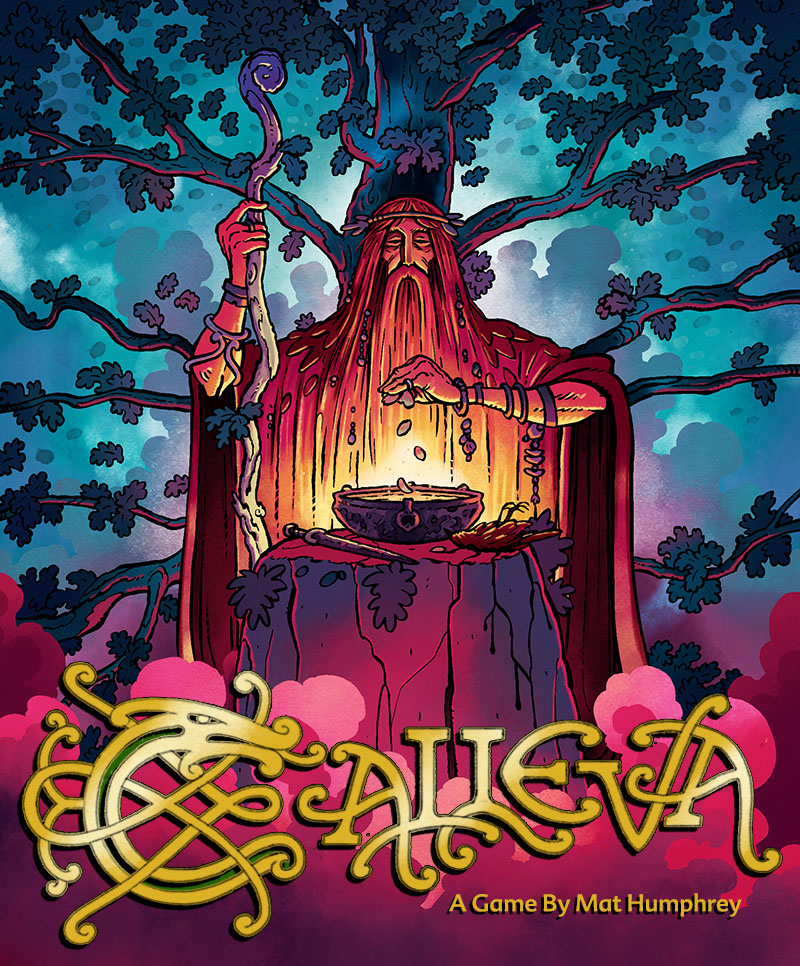
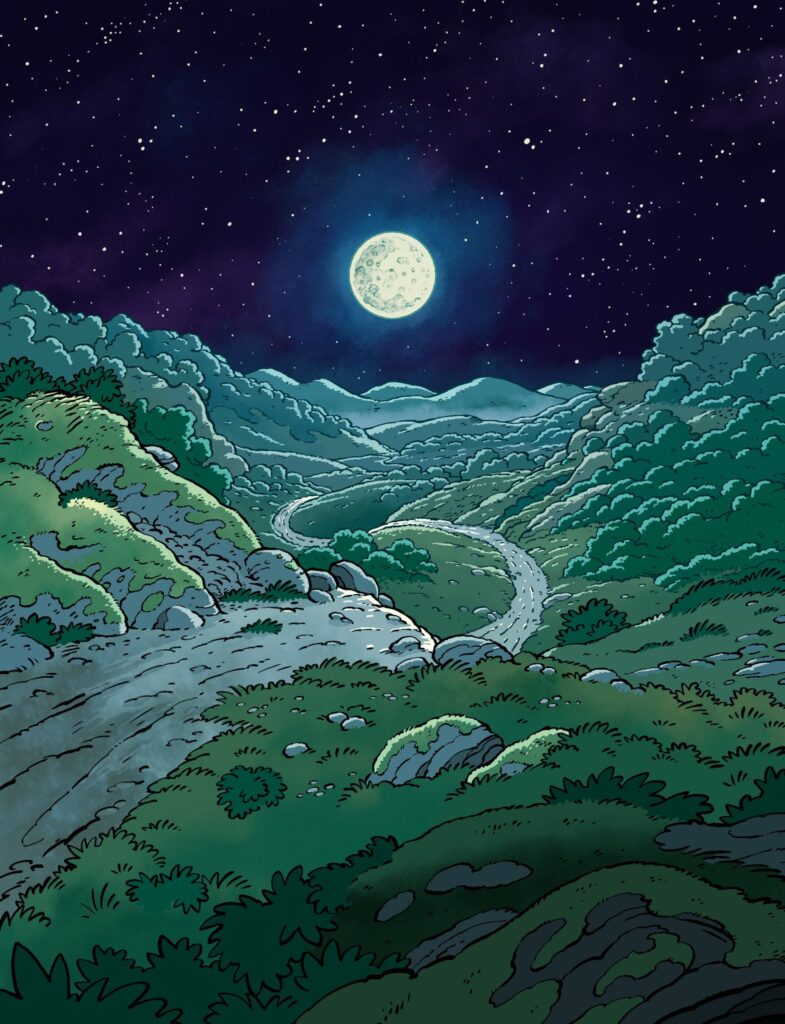
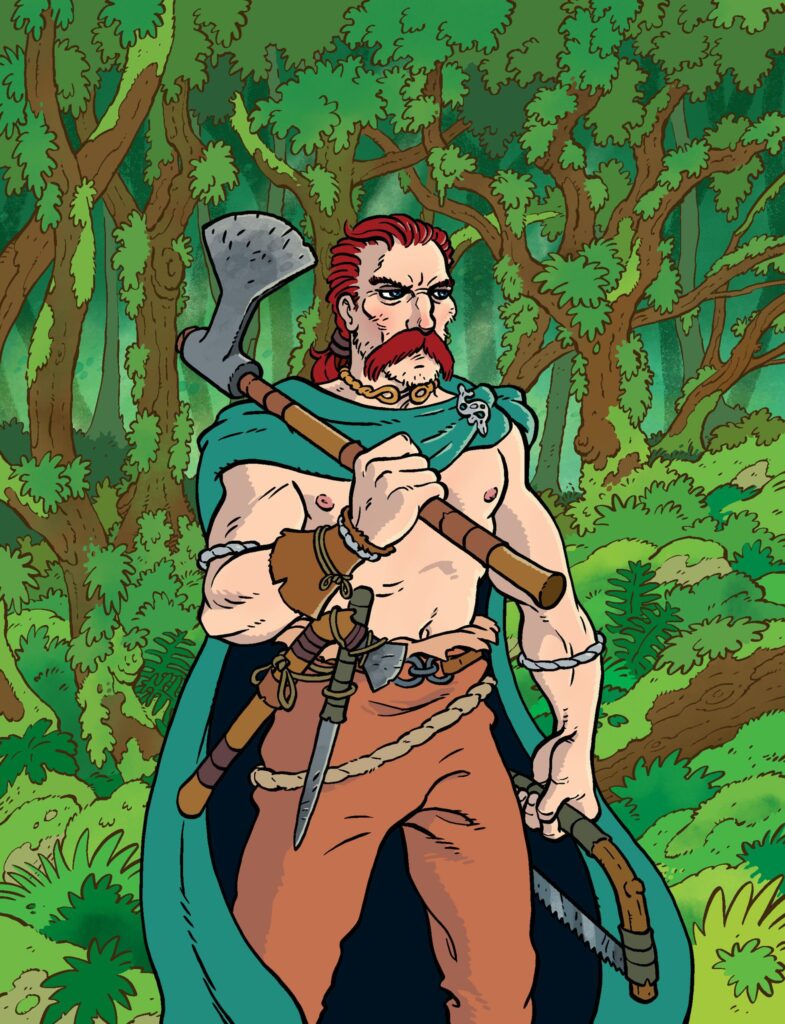
What are your influences in terms of your comics, and, also, who you are reading at the moment? Who would you like to plug?
My comics influences are easily discernible – Jacobs, Hergé, Leloup, Tardi. I’ve not been reading many comics recently – that’s probably terrible! I’m having to cut down on my book consumption, but also I’m just out of the loop.
What was the last comic I bought? The latest Yoko Tsuno from Cinebook, and their new translation of Blake & Mortimer: The U Ray, and Shuna’s Journey by Hayao Miyazaki. I got the latest Asterix book for Christmas. I really am a very unadventurous comics reader!
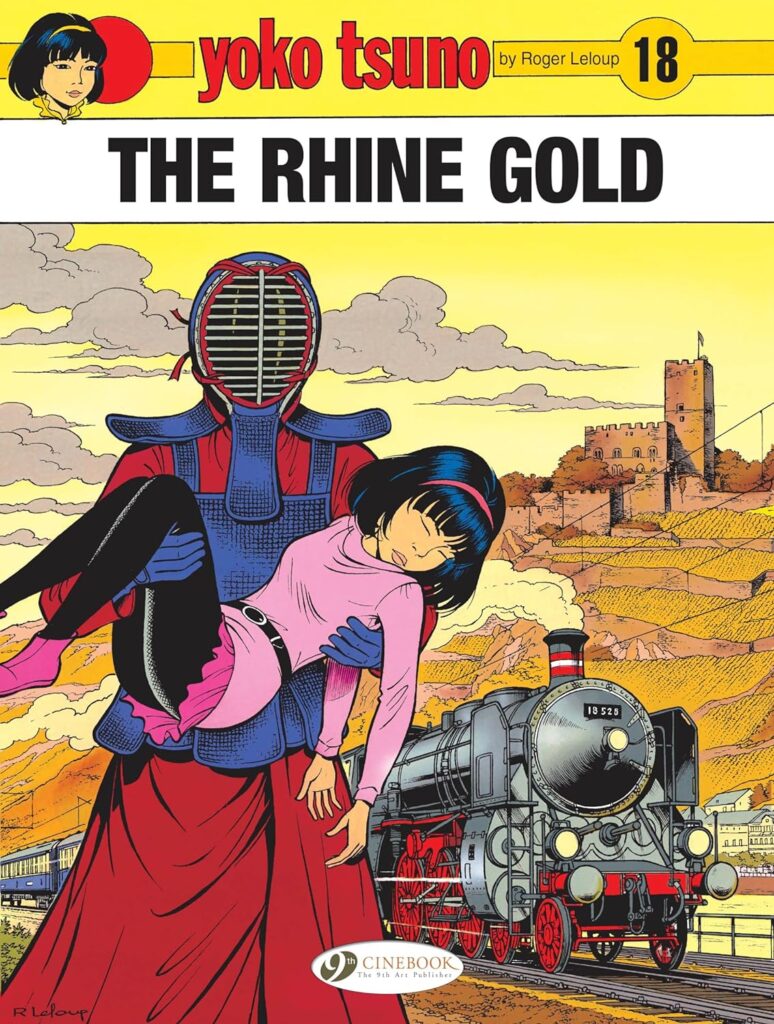
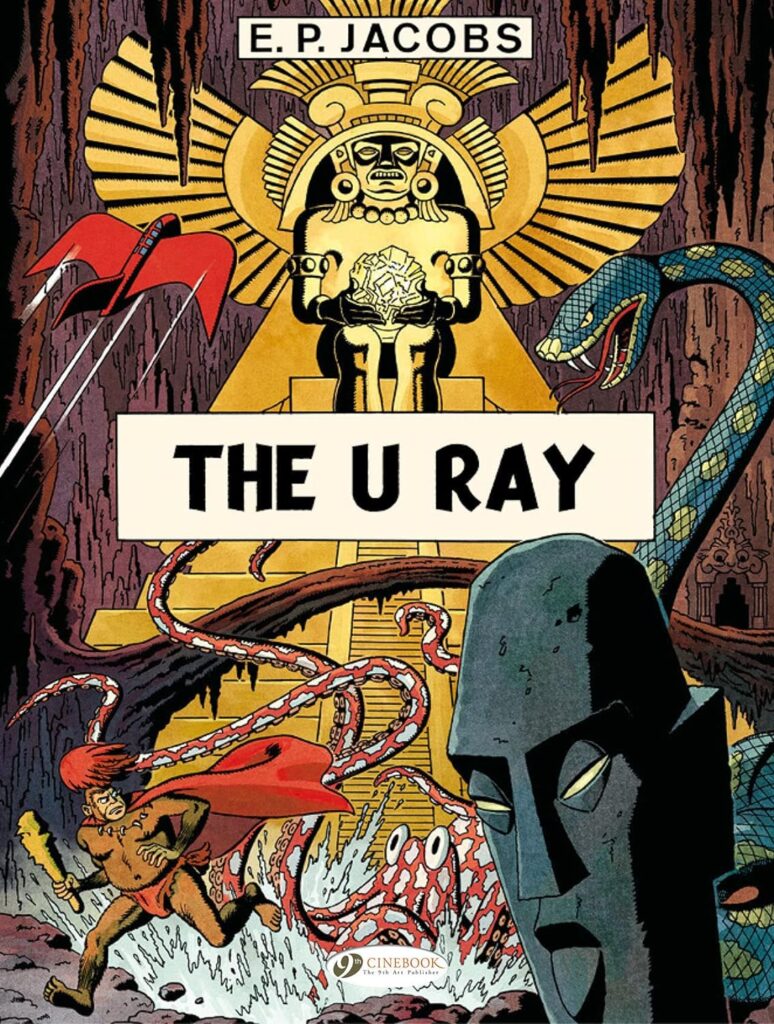
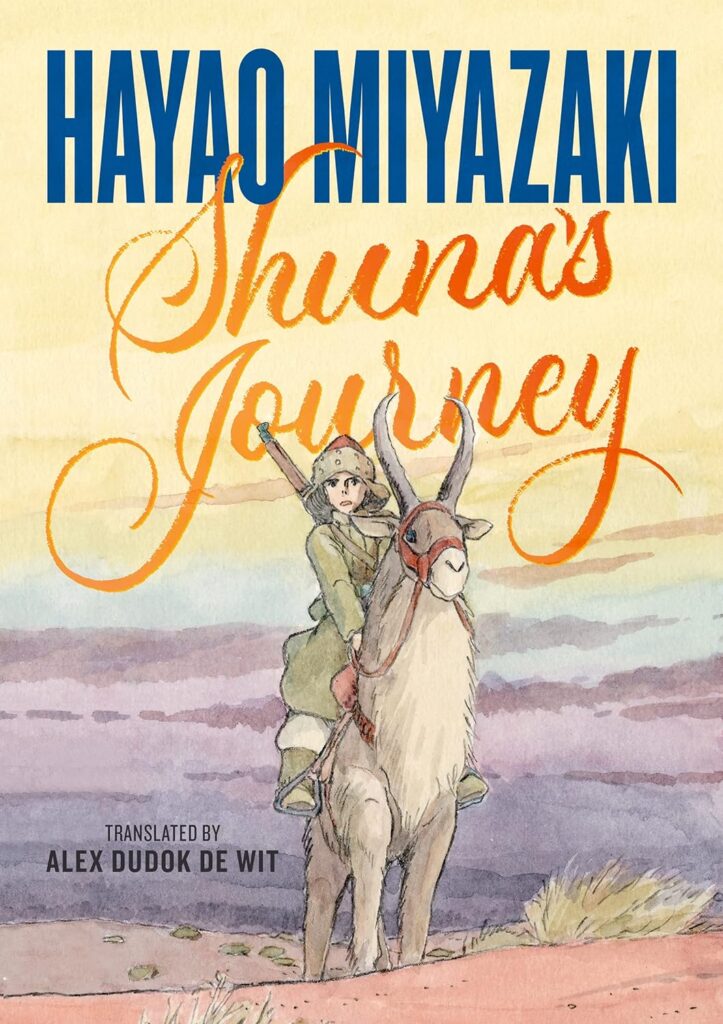
What made you think of giving up Illustration?
Disillusionment with the commercial side of it, I think. I’d done quite a successful project, which I loved doing, but it had a terrible contract and pay. I was going from job to job with below minimum-wage remuneration and if I ever tried to quote anywhere near what the job was actually worth, I didn’t get the work.
Throughout publishing and commercial illustration, I just felt bottom of the pile all the time – maybe unfairly, but it was just piling up a bit. I know that’s in no way uncommon for many writers and artists.
And what changed and stopped you from giving up?
I went on holiday and thought, by the time I come home I’ll have decided! I took all my Tardi albums with me and lost myself in them and came back with the notion I’d stop being an illustrator but carry on with comics, as a hobby. But by then, I’d agreed to do a computer game job, which at the time was to be for one year.
I’d done a comic, I’d done a board game and here was a computer game – I owed it to 12-year old me to see out these childhood-dream projects.
The computer game turned into a three-year job and was a lovely experience. I think the idea of giving up illustration just slowly faded away during that time – though it’s still at the back of my mind if things don’t improve. I’d have to find something else to do though, and I’m not sure what that could be.
How can people support you and other freelancers if they like, apart from the obvious way of buying your stuff (I’m thinking social media signal boosting, etc)?

With this comic, for the first time, I’ve started a Patreon page. I’m really unsure about this as I have that, possibly very English, but maybe just human, distaste and immense uneasiness about asking for money. Having said that, I’m not creating any paid content at the moment, I’m putting up sketches and things for free, for those who sign up.
I’m thinking of getting a few more pages of The Brambletye Box finished, and when I’ve proved to myself, that I actually have committed to getting this book done, then perhaps I’ll accept small donations from patrons to help me along. But generally following and sharing my work on Twitter and Instagram (though I’m not a frequent poster) is also very much appreciated. All that support really does help to keep me going.
In terms of being very ‘English’, you’ve described your work and the comic but not really plugged it. What sort of story is it, what kind of audience might it appeal to and what accolades have you had for your comics in the past?
It’s an adventure story. It’s mostly pure escapism for me, and so hopefully for others too – perhaps trying to recapture those feelings I had when I first saw stuff such as Indiana Jones, Tintin, The Man Who Would Be King, Lawrence of Arabia, She … the list goes on. But I didn’t want to just go down the route of merely throwing in the most potent pulp ingredients, ticking all the nostalgia boxes. Despite it being a strip born from heavy influence, I also want my own voice and originality in it too. That’s the hope, anyway.
And I hope the audience might be wider than just those who are normally drawn to that kind of adventure, too. From being out and about with The Rainbow Orchid over the years, I’ve been so pleased at the wide audience it seemed to attract – truly all ages, male, female, and international. The Rainbow Orchid did quite well – the first two volumes sold out their initial Egmont print runs and were reprinted, it won a British Comic Award, it was Observer graphic novel of the month, it was widely and positively reviewed, it ended up with five translations. It didn’t make me much money, but I’m very pleased!
I know you’re a fairly modest and even self-effacing guy, and I think I need to push you not to be for the sake of your work…
I appreciate that – it’s bloody hard! I think I’m very aware of The Rainbow Orchid’s shortcomings, and I especially found it hard to be on a table at a comics show and say “look at me! I did this!”, when what I really want to say is, “look, I did this, I’m proud of my achievement, but here’s the bits I know are awful and, oh god, look at that drawing … but overall, it’s quite good!”. Ha, it doesn’t work well like that. I didn’t actually read The Rainbow Orchid all the way through until December 2021 and by that time it felt less familiar, and I actually quite enjoyed it. That’s one of the things that reignited the spark that eventually led back to Julius Chancer again.
How would you describe your style, and how it’s developed over the years, in terms of both your writing and art (you’ve already mentioned some influences). How fair is it to describe Julius Chancer stories as ripping yarns?
Ripping yarns are definitely an aspect, but I hope for more subtlety too. There’s something about those brilliant character moments in a Kurosawa film, or the emotion in a Ghibli animation, and the beautiful pathos of a Chaplin that I want to get into my comics.
I haven’t succeeded, I don’t think. Maybe I don’t give myself enough space – I worry that I cram everything with plot, but I love a deep plot too! Or maybe I do get it in but it just doesn’t come across in comics.
I don’t know if my style has developed much. If you look at my comic strip adaptation of The Tempest, that is very different, but that was a long time ago. Ligne claire is my natural base now – you can see it with Julius Chancer, of course, but also in the card game I did, The Lost Expedition, and the computer game, Curious Expedition 2, both jobs I got largely because of my style.
My art has improved a lot since The Rainbow Orchid – I can at least say that with confidence. I don’t know what to say about my writing. I hope I’ve learnt from the mistakes I made in Rainbow Orchid, we’ll see.
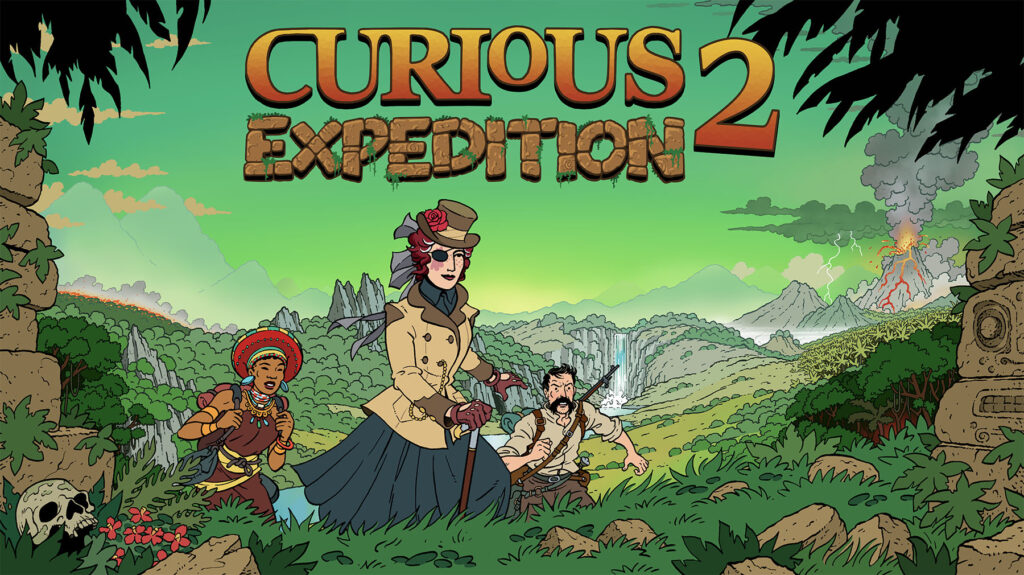
Please tell us about this years-long computer games project you mentioned.
I was the main (and pretty much only) artist for Curious Expedition 2, a ‘rogue-like’ adventure game from Berlin studio Maschinen-Mensch. I did a lot of the concept work, under the direction of Johannes Kristmann, illustrated the environments, characters, items, and some of the map and interface elements too.
A lot of it was super challenging and it was a fantastic experience – especially seeing how it was all put together and the work of the animators and effects artists on my drawings afterwards – they’re magicians!
The game is huge and it’s unique every time you play it. They wanted to try a game with ligne-clairegraphics, as it’s not really been done before and they’d seen my work on Osprey Games’ The Lost Expedition, so they gave me a try-out.
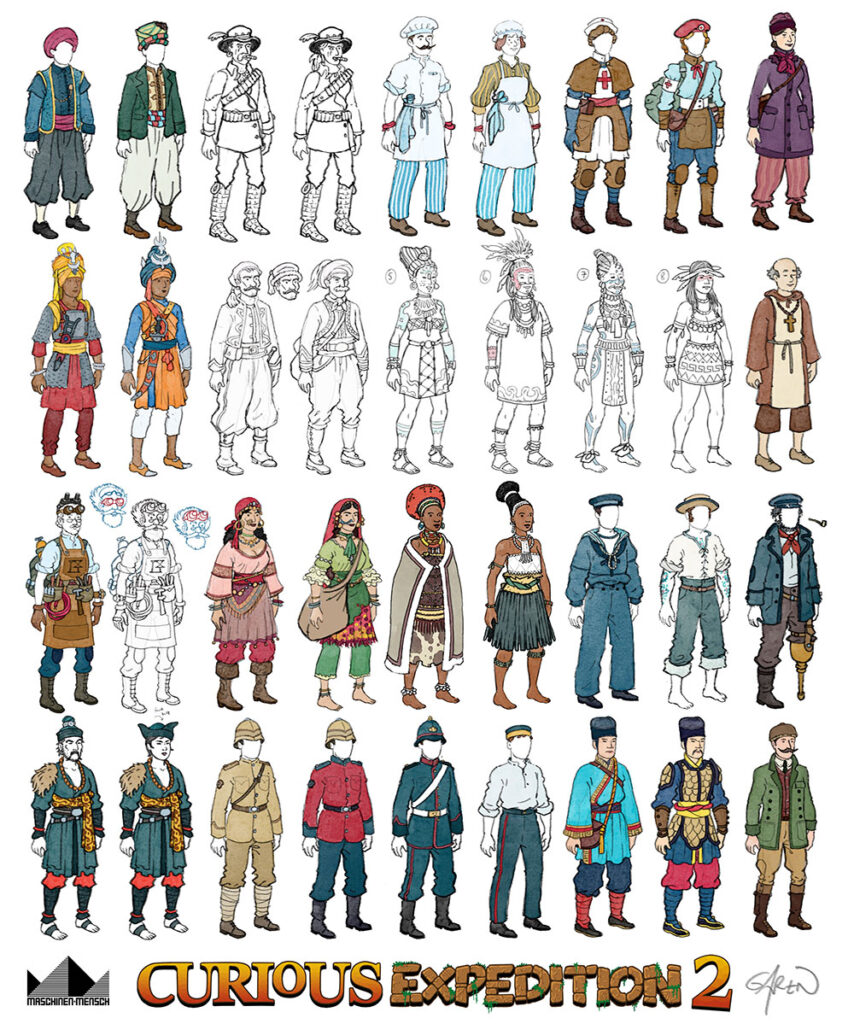
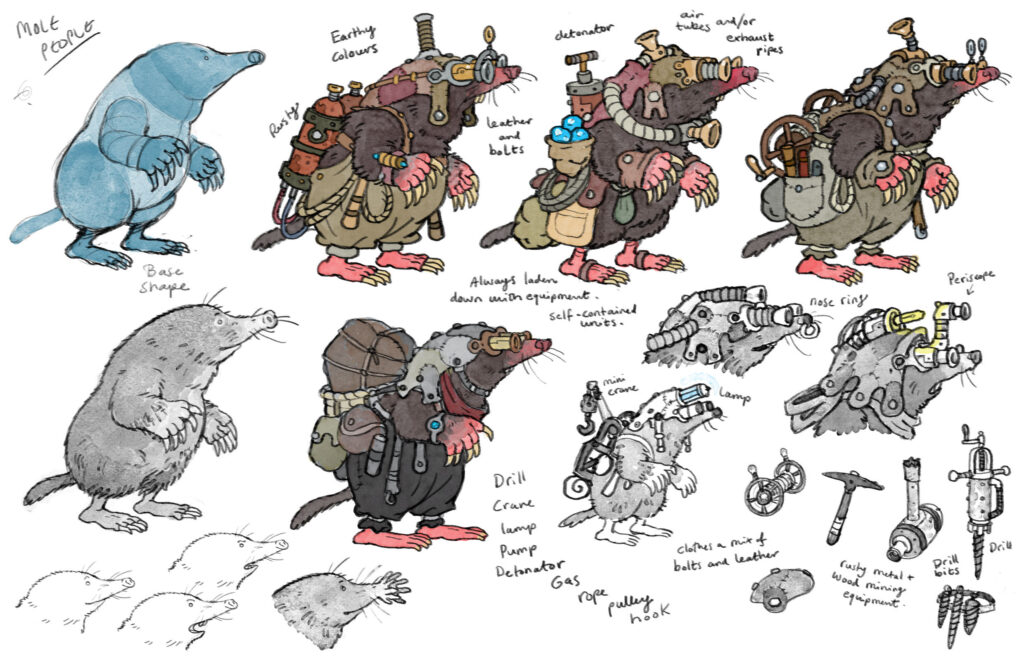
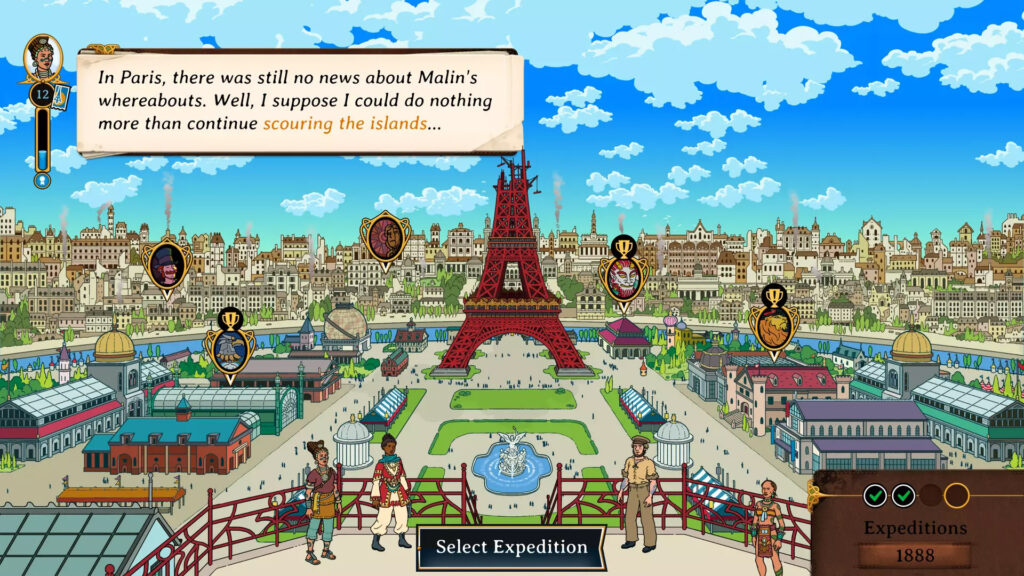
I was so lucky to have that continuous work over what was a very difficult period for so many, during the lockdowns. I kind of disappeared for those three years, because I couldn’t show what I was working on. It wasn’t within my power to do that, and computer games aren’t like books or board games. They don’t really shout-out individual creators, probably because it’s a major team-work operation, though usually computer games have a team of many illustrators doing the art.
What are your thoughts on the British comics scene, its general health and your own place in it?
I don’t feel I can comment on it, I’ve not been very involved, and I feel very ignorant about it all. The last British comic show I did was in 2013, the more recent shows were in support of the European translations, mainly in Germany and Denmark. And then my work took me into the world of board games and computer games.
I can see it’s very different from when The Rainbow Orchid was published back in 2009-2012. When I first started Julius Chancer, it was the late 1990s and its creation was partly as a reaction to there being so few mainstream children’s comics. Everything, it seemed, was dark and gritty and violent. There’s been an explosion in wonderful children’s and YA comics and books since then.
So much has changed. I’ll see where I fit. [I suspect] many of my old readers will have moved on, maybe I’ll find myself way out of step. But then I thought that back in 2009 as well.
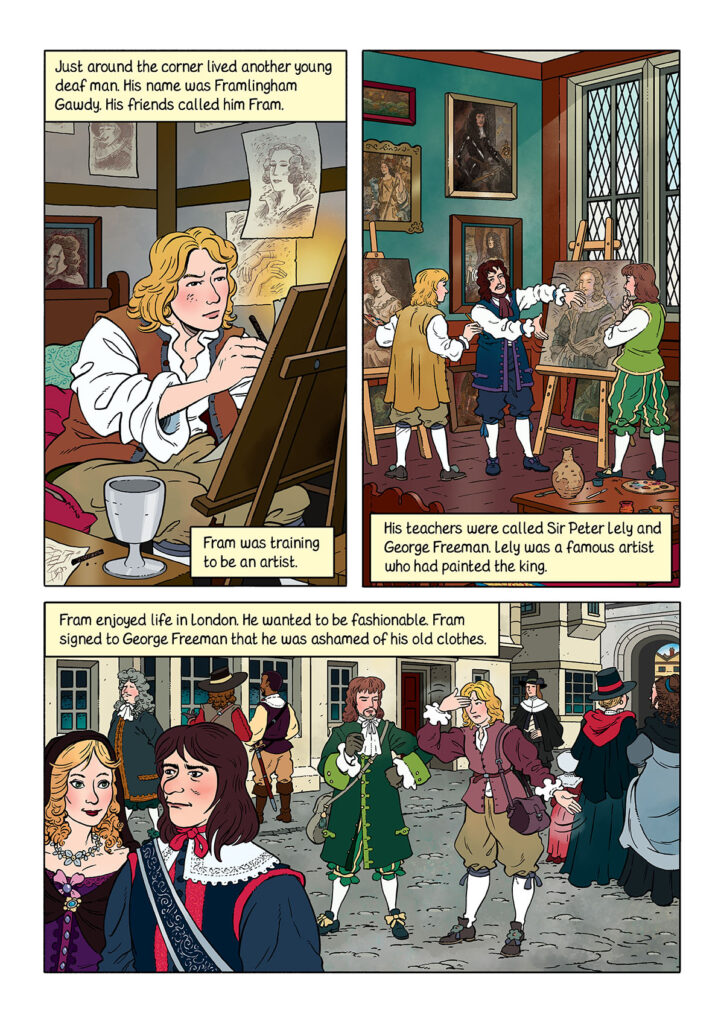
I’m always been impressed watching your comics career with the way you have so resolutely ploughed your own creative furrow. Would you agree that you have done so and what have been the pros and cons of that approach?
Thanks for that, Matt. Yes, I think I have ploughed my own furrow, but it’s probably due to a failing I have, and that failing is that I realised pretty early on that I wasn’t a good collaborator. Of course, it’s not necessary a failing in the negative sense, I’m okay with it – but it’s not a particularly wonderful trait if you’re serious about working in mainstream comics!
I took my portfolio to a UKCAC sometime in the 1990s and got a mildly positive response, but it resulted in the reality hitting me of what I’d be doing if I did get a job in comics, and I knew I didn’t want to draw other people’s scripts. I’d done some small press stuff like that, and it was enjoyable, but it was not what I wanted.
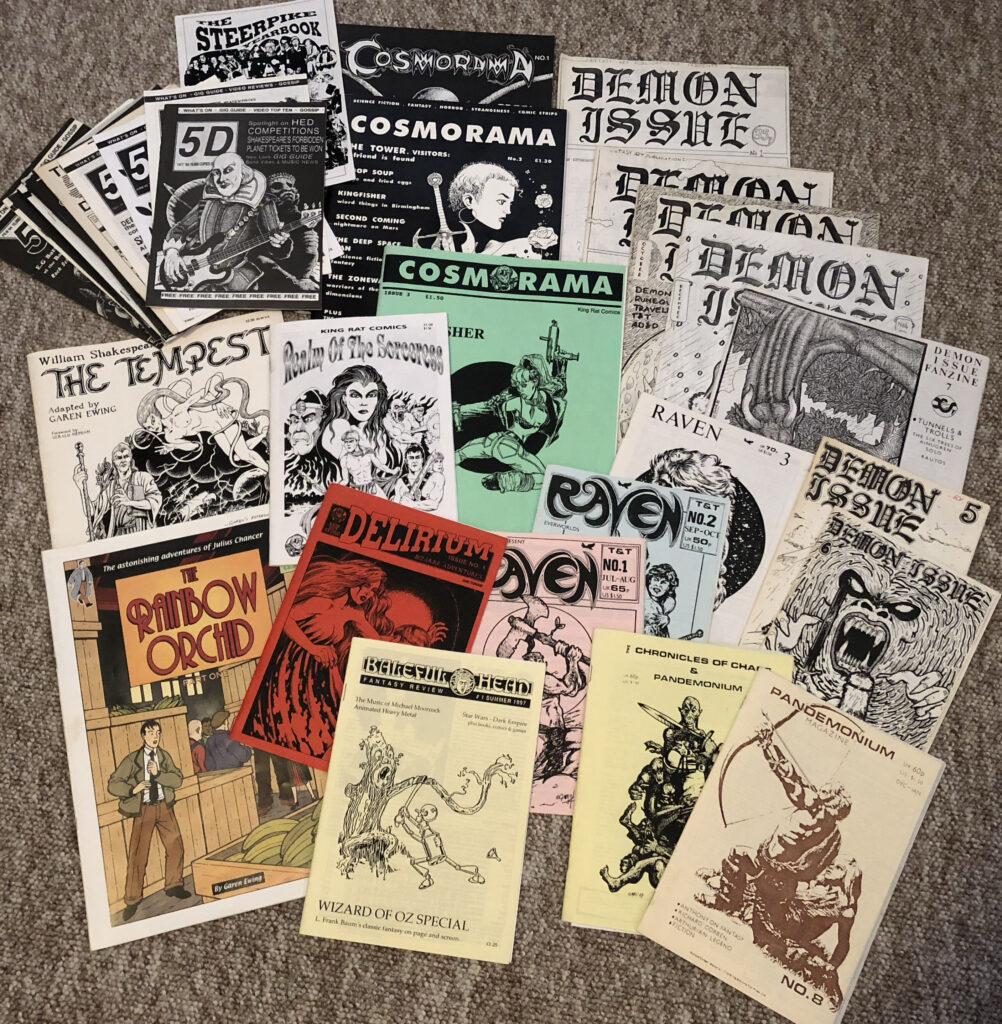
I’m not a top-flight artist, and I’m not a superstar writer, but I do think I have something I can offer when I combine these together myself. The pros include total creative freedom. The cons include, well, maybe total creative freedom! But also, I nearly always say no to offers of collaboration and while this isn’t usually a problem I am aware of some creators who have taken that stance quite personally and distanced themselves from me. I’m not a fast comics creator, so I need to spend that creating time doing something I really want to do.
Wasn’t there a comic strip that appeared on digital screens, or have I imagined that?
I forgot that. Yes, I wrote and drew a comic for the advertising firm, JCDecaux, for Christmas 2015, about a little bird who follows his favourite tree from Norway to Trafalgar Square. It was the first ever public digital comic, if that’s a thing, and appeared on JCDecaux’s advertising screens all across the UK, in shopping malls, airports, train stations, high streets, etc. They estimated it reached an audience of 30 – 40 million. It was hard work with a tight deadline, but enormous fun.
I did another project for them a couple of years later, a game where you had to locate UK landmarks across a map, again appearing across the nation on their digital screens.
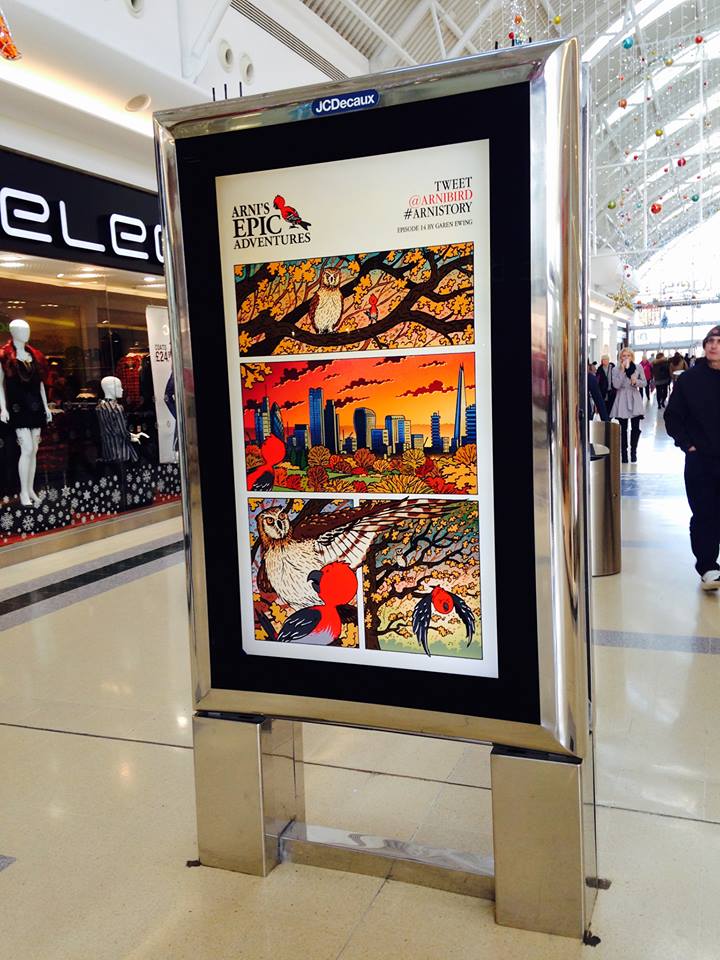
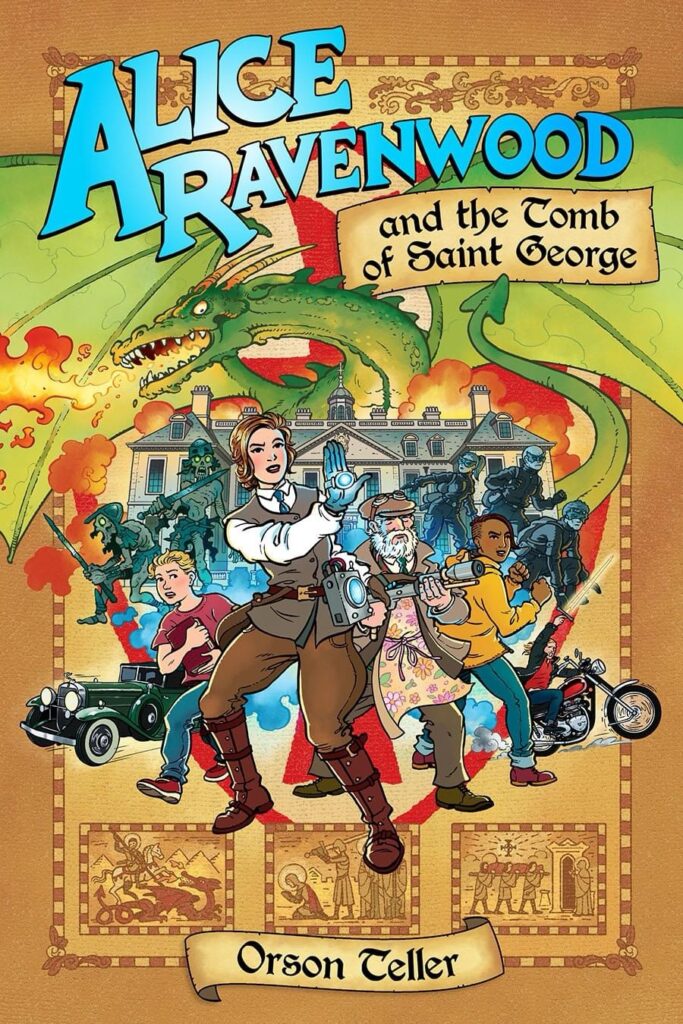
What’s next for Garen Ewing?
I think that’s just the question I’m asking myself right now, too. The Brambletye Box, as much as possible and when I can fit it around projects and life. I’m currently working on a little publication which I conceived of when I turned 50, but only started a couple of weeks back (I’m 54 now): a collection of writing and bits and pieces from the archives. I wanted to make it like the fanzines I produced in the 1980s, so it’s A5, black and white, and almost ready.
Apart from that I have no big projects on the horizon, the future is a little uncertain, but that’s okay, at least for the moment.
• Garen Ewing is online at garenewing.co.uk | Patreon | Instagram | Twitter | YouTube
• Julius Chancer and The Brambletye Box is online here
• The Complete Rainbow Orchid is available here from AmazonUK (Affiliate Link)
You can download a PDF of The Rainbow Orchid Supplement that was originally released in 2012 from Garen’s website. The downloadable PDF version was expanded in 2018 from the original printed edition (now out of print). There were also two French versions released by BDMust – one for readers and one for trade, but both were hugely cut down from the original (although unlike Garen’s version, they were in colour).
The Rainbow Orchid Supplement includes annotations, sketches, interviews, and other little bits and bobs.
• Check out 50zine by Garen, too, a collection of some of his writing, 100 A5 pages with 60 articles from 1987 to 2023 and covering various topics, including comics, creativity, films, games, music, history and more.
It’s £7.50 plus postage and packing, available here
Thanks for Garen for a smashing interview and to Matt Badham for co-ordinating and conducting it
Matt Badham is a freelance writer. His work has appeared in the Judge Dredd Megazine, 2000AD and Big Issue in the North.
Categories: British Comics, Comic Creator Interviews, Comics, Creating Comics, Digital Comics, downthetubes News, Features, Games, Other Worlds
